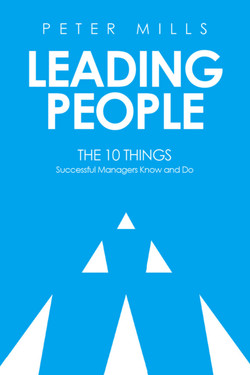Читать книгу Leading People - Peter Mills - Страница 7
На сайте Литреса книга снята с продажи.
ОглавлениеIntroduction
TO MEET THE challenges of today’s work environment, all employees must be focused on achieving business goals, with managers creating a work environment where personal effectiveness and continuous improvement is sought by all. In most organizations, however, this is not the case and managers are left wanting as they either don’t know what they need to do to be successful, or are not effectively supported by their organization to do their role – or both.
Over the years, there has been much talk about the role of the manager, building a high-performance workforce, improving staff engagement, changing an organization’s culture, increasing innovation, and effective change management without a clear understanding of what is required. This has resulted in a feeling of helplessness for managers who already feel overburdened by unclear and unfair expectations. As a result, managers are more and more outsourcing their work to others instead of performing their role, creating an industry of work for consultants. This damages or even breaks the strong manager-employee relationship that is needed for productive work.
This book provides managers with the 10 things successful managers know and do. It is based on ‘The Leadership Framework’, a fully integrated model of principles and concepts for managing people. At the framework’s core is a strong manager-employee relationship based on working together to achieve business goals. This relationship is a two-way, trusting, productive, working relationship with team members working to their full potential.
At the framework’s foundation is a body of knowledge known as Requisite Organization–requisite meaning what is required by the natural order of things. The concepts and principles were originally developed by Dr. Elliott Jaques and Lord Wilfred Brown, and are based on significant research and practice around the world. This research considers organizational design as a purpose-built structure, with systems of work and defined working relationships that enable people to work toward a common business purpose. The organization itself is activated by applying effective managerial leadership practices.
The original Leadership Framework was developed by Barry and Sheila Deane, from PeopleFit Australasia, who simplified and condensed Jaques’ concepts and principles. They have kindly given me full access to their substantial and excellent work.
Using PeopleFit’s work, I have complemented, modified, and updated it using the research of others and from my own extensive experience:
In senior human resources roles across a range of industries both in the private and public sector
In working directly with my own team as a leader on setting goals and improving performance
As an advisor and coach to CEOs, managers, and non-managers roles in organizations
Using This Book
To be successful, managers need a framework for their work. This book provides that framework. The book stands alone and each principle is complete. It defines what managers must know and must do.
As all concepts are fully integrated by the end of the book, the reader will have a strong understanding of the nature of people, work, and working relationships. Using these principles will provide:
Clarity on the requirements of your role as a manager
Clarity on the role of others in the organization and how you should interact with them
Clear accountabilities and authorities for managerial work
Principles for managing in a way that builds trust and achieves business outcomes
Practices to develop the full capability of your team
An understanding of how to build effective working relationships across the organization
A way to quickly diagnose the systemic causes behind day-to-day issues and address root causes
A ”code of practice” for your managerial work
A checkpoint against which you can assess yourself
This will enable you to build a high-performing team, to develop team members to their full potential and be personally successful.
If these concepts are extended across an organization to all people managers, it will provide the additional benefits of:
Consistency in leadership practices across the organization
Improvement in leadership at the individual, team, and organizational levels.
A common language to solve people management issues
An organizational culture based on trust and fairness
Cross-organizational alignment
Efficient strategy execution
Improved staff engagement and effectiveness
At the end of each chapter there is a list of ‘Tips for Getting Started’. These tips will help you on your journey to become a great manager and leader, and provide the basics for implementation. The companion website offers additional free information and tools, and the opportunity to partner for a more comprehensive implementation. It also provides additional content on other related topics. You can join The Leadership Framework Network and get access to all this information, or purchase content as you need it.
Additional information available at:
www.theleadershipframework.com.au
